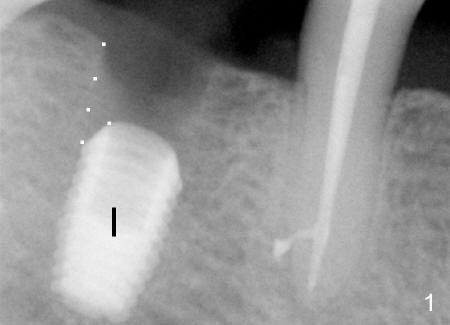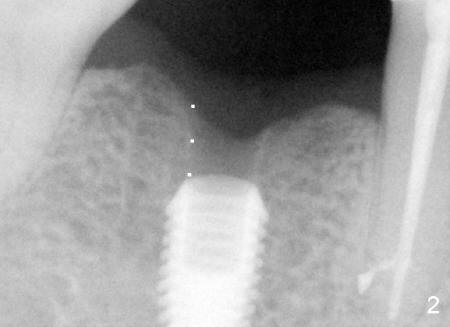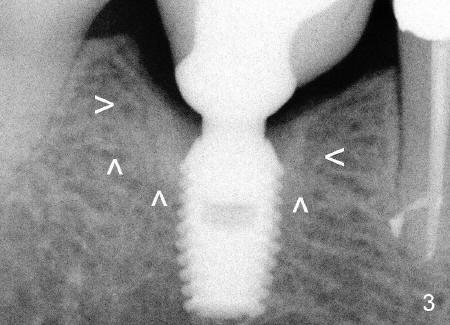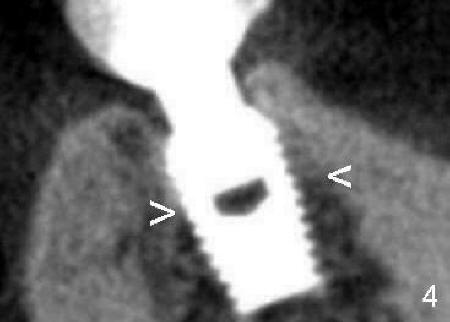



 |
 |
 |
 |
Dental Education Lecture: Implant is Getting Stronger
Earlier, we mention that placing an implant is similar to planting a tree. First we need to dig a hole in the bone, which is pain free after local anesthesia. Second, place the implant in the hole. Last, bone chip is placed around the top of the implant, just as soil is placed around the tree above the root and we step our feet to condense the soil so that the tree will not fall easily. In spite of this effort, it looks that there is a gap around the top of the implant (Fig.1 dashed lines, triangular area; I: implant). In three to four months, the gap disappears because of bone growth toward to the implant (Fig.2 dashed line as compared to those in Fig.1). The implant is stable inside the bone, ready for abutment and crown. After this, the patient can chew like a chimpanzee. After a little while (two years), the bone around the top of the implant is more solid (consolidated) (Fig.3 arrowheads, compare the density of bone with that in Fig.2). It seems that chewing force transmits to the implant, which in turn stimulates the bone to grow stronger around it, particularly the upper portion. CT also shows the same results in another patient after 1 year 8 month functioning. The bone is denser above the arrowheads. All of these suggest that implants are getting stronger with eating. This is an extraordinary natural phenomenon.
Xin Wei, DDS, PhD, MS 1st edition 01/19/2011, last revision 09/28/2012